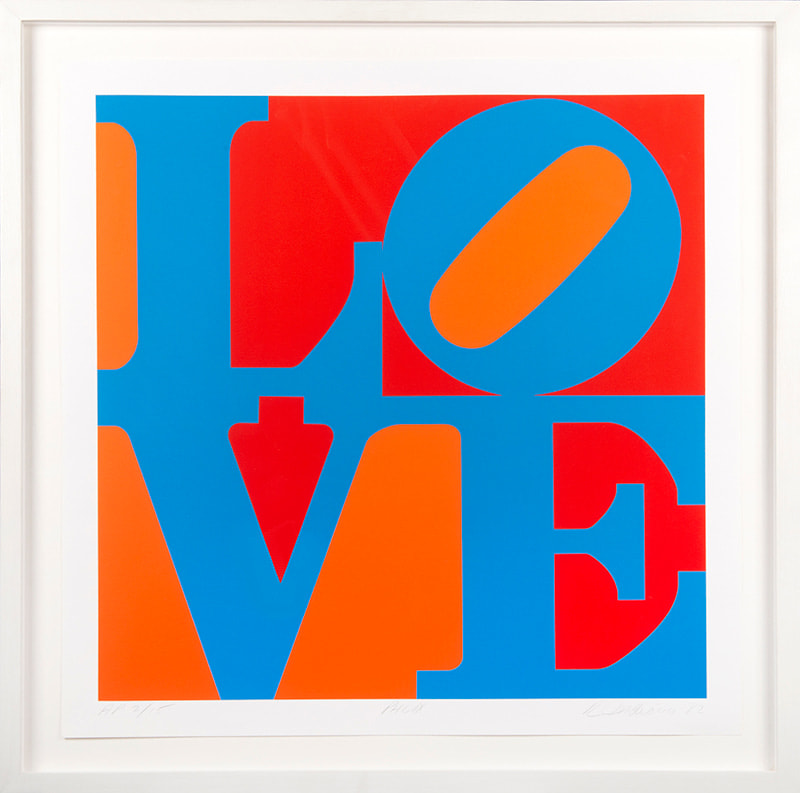Robert Indiana
Phlox, from A Garden of Love, 1982
Screenprint in colours on Fabriano paper
68 x 68 cm. (26¾ x 26¾ in.)
signed, dated, titled, and inscribed ‘AP’ in pencil, one of 15 numbered artist's proofs, aside from the edition of 100
113788
Sold
Screenprint in colours, 1982, on Fabriano paper, signed, dated, titled, and inscribed ‘AP’ in pencil, one of 15 numbered artist's proofs, aside from the edition of 100, printed by Domberger...
Screenprint in colours, 1982, on Fabriano paper, signed, dated, titled, and inscribed ‘AP’ in pencil, one of 15 numbered artist's proofs, aside from the edition of 100, printed by Domberger KG, Filderstadt, with the blind stamp, published by Prestige Art Limited, Mamaroneck, New York, 68 x 68 cm. (26¾ x 26¾ in.)
‘A Garden of Love’ comprises of six colour variations of Robert Indiana’s emblematic, square ‘LOVE’ composition. ‘LOVE’ is one of the most recognisable images of the American Pop Art movement and was a pioneering piece of hard-edged abstraction - an approach to painting that became widespread in the 1960s and is characterised by areas of flat colour with sharp, clear (or ‘hard’) edges. ‘A Garden of Love’ is just one of a number of adaptions of the original 1964 design. ‘LOVE’ has been translated into different languages, alphabets, and mediums – most famously into a series of vibrant, large scale public sculptures.
First created in 1964 for the Museum of Modern Art’s Christmas card that year, ‘LOVE’ quickly became the most popular greetings card the museum had ever produced and was later adapted for the design for a national stamp. The straightforward and socio-political overtones of the message of ‘LOVE’, are irrevocably emblematic of 1960s optimism and even became associated with the anti-war movement in America during this time which Indiana strongly supported. The artist makes reference to the ‘flower power’ generation, from which the concept of ‘LOVE’ first sprang, by naming each of the colour variations in ‘A Garden of Love’ after a type of flower: Tulip, Lily, Zinnia, Rose, Phlox and Lilac.
‘A Garden of Love’ comprises of six colour variations of Robert Indiana’s emblematic, square ‘LOVE’ composition. ‘LOVE’ is one of the most recognisable images of the American Pop Art movement and was a pioneering piece of hard-edged abstraction - an approach to painting that became widespread in the 1960s and is characterised by areas of flat colour with sharp, clear (or ‘hard’) edges. ‘A Garden of Love’ is just one of a number of adaptions of the original 1964 design. ‘LOVE’ has been translated into different languages, alphabets, and mediums – most famously into a series of vibrant, large scale public sculptures.
First created in 1964 for the Museum of Modern Art’s Christmas card that year, ‘LOVE’ quickly became the most popular greetings card the museum had ever produced and was later adapted for the design for a national stamp. The straightforward and socio-political overtones of the message of ‘LOVE’, are irrevocably emblematic of 1960s optimism and even became associated with the anti-war movement in America during this time which Indiana strongly supported. The artist makes reference to the ‘flower power’ generation, from which the concept of ‘LOVE’ first sprang, by naming each of the colour variations in ‘A Garden of Love’ after a type of flower: Tulip, Lily, Zinnia, Rose, Phlox and Lilac.


